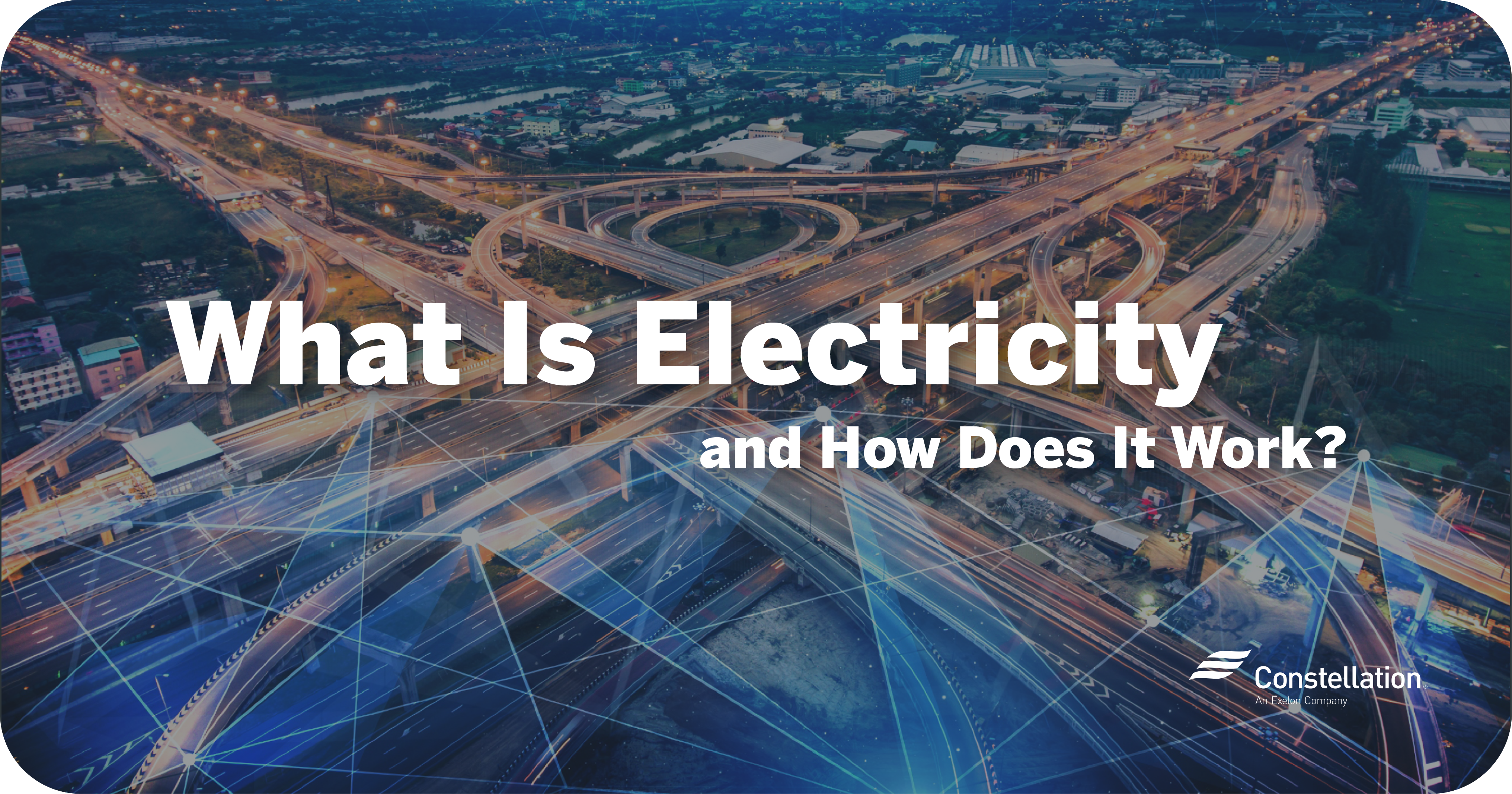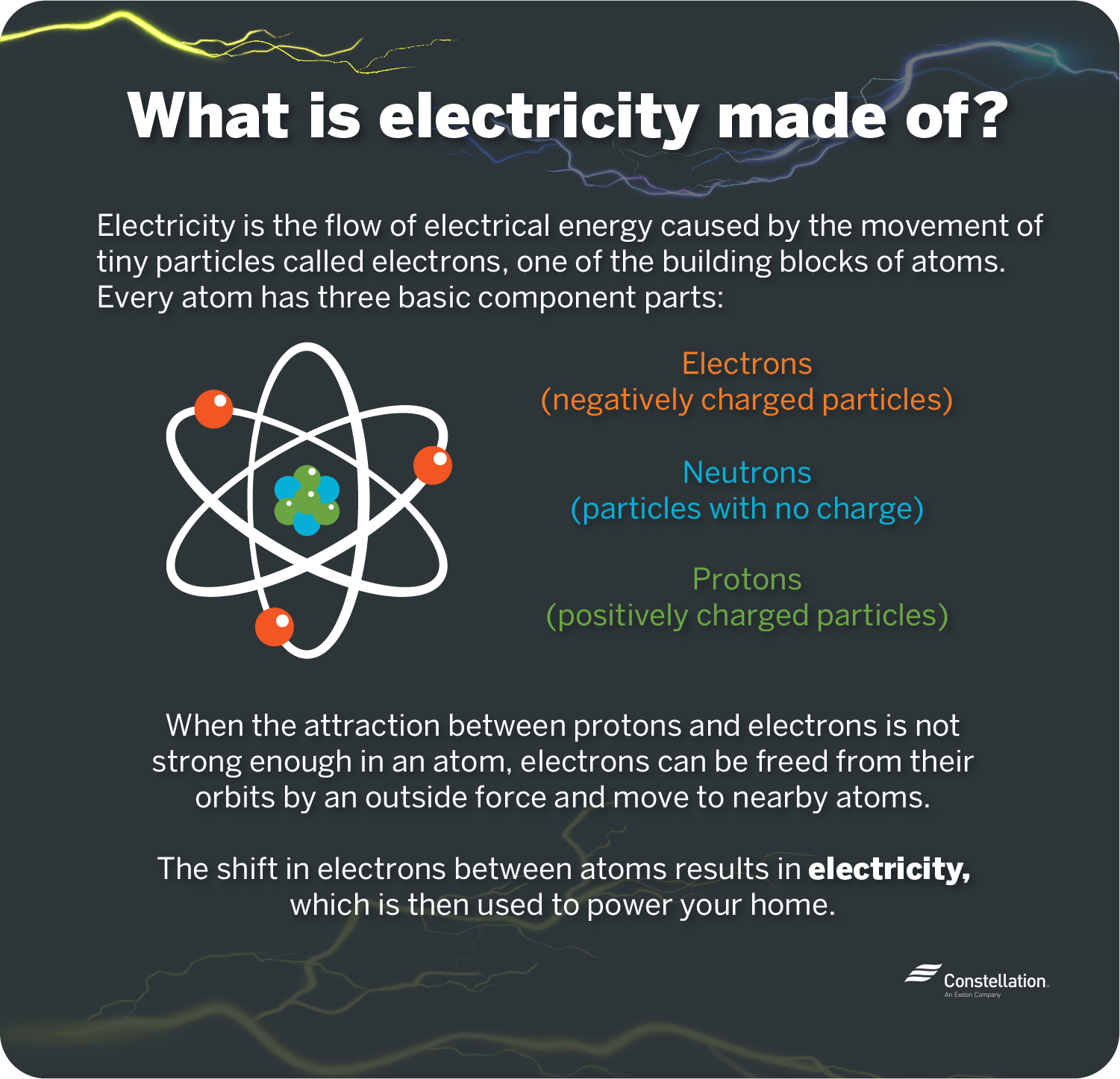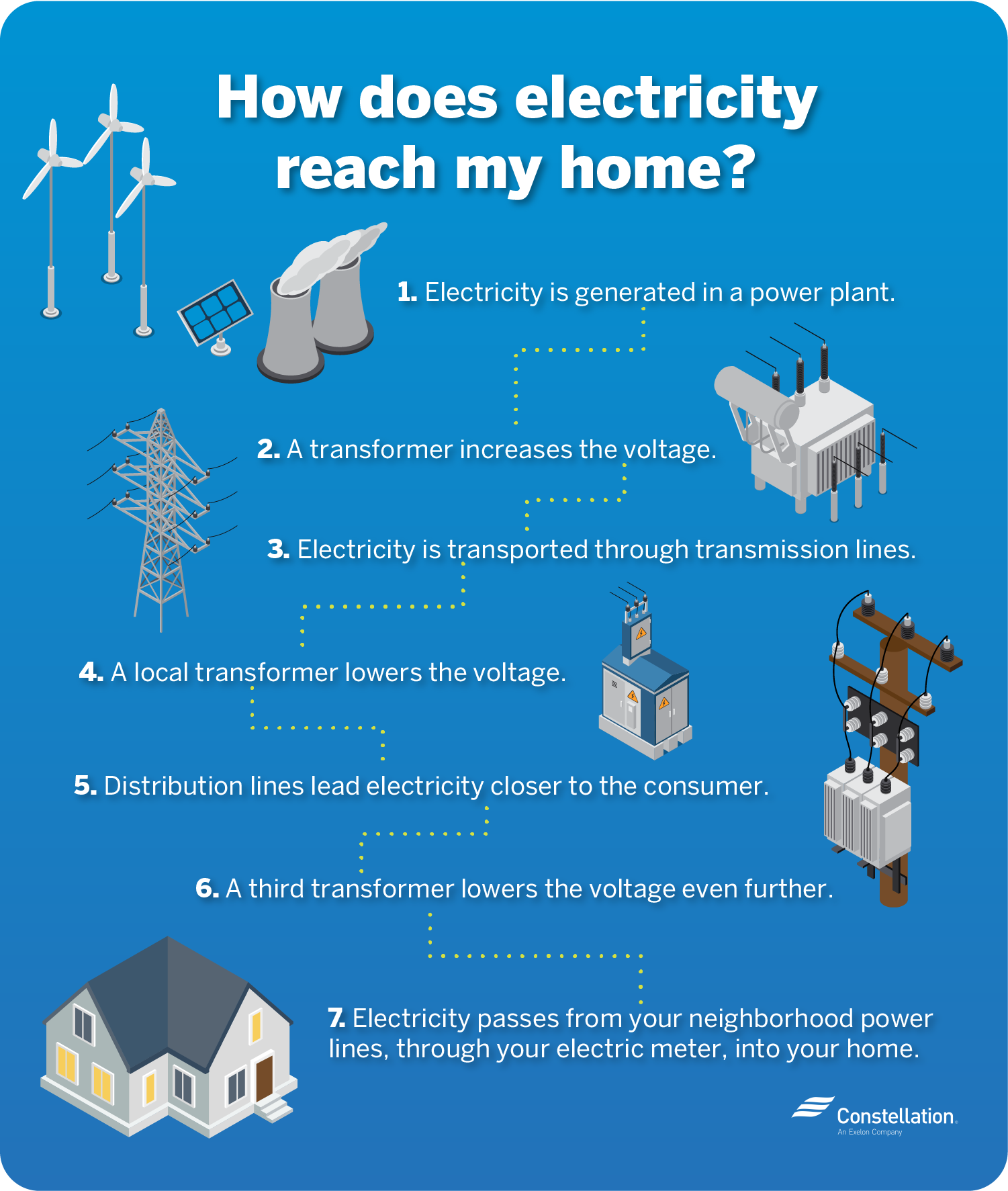
- Category:
Energy Efficiency -
Last updated:
August 12, 2021
Electricity Explained: How Electricity Is Made and From What Sources
Electricity powers many important things in our everyday lives, from the refrigerators that keep our food cold to the lights that illuminate our homes. It’s easy to take the convenience that electricity offers for granted, especially when it comes at the flick of a switch or push of a button. But most of us rely on electricity to keep our homes up and running, so it’s worth knowing what electricity is and how it works. The more you know about this miraculous energy source, the more likely it is that you’ll better understand your electricity bill.
What is electricity and what is it made of?
Electricity is the flow of electrical energy caused by the movement of tiny particles called electrons. But the answer to “what is electricity made of?” isn’t electrons. These charged particles simply unleash electrical energy when they move in a particular way. So, to fully understand electricity, you need to understand electrons and the building blocks of matter: atoms.
Every atom has three basic component parts:
- Protons — positively charged particles
- Neutrons — particles with no charge
- Electrons — negatively charged particles
The protons and neutrons stay in the center of the atom, or the nucleus, while the electrons orbit around the nucleus. As a rule, opposite charges attract, while like charges repel. The positively charged nucleus attracts the negatively charged electrons, holding them in orbit. A balanced atom has the same number of protons as electrons.
The closer the electrons are to the nucleus, the stronger the attraction. But when electrons are farther from the nucleus, they can be freed from their orbit by a strong-enough outside force. The now free electron, with its negative charge, can be pushed or pulled in search of a new atom. And upon contact, its negative charge will repel another electron in a domino effect known as an electric current.
Electrical energy is that moving charge as these electrons flow from atom to atom. Some atoms, like copper, have outside (or valence) electrons that can be more easily freed and swapped. Materials like copper are known as conductors, and by making wires of conductive materials, we can move an electrical current long distances — and power your home.

How is electricity made?
One of the interesting facts about electricity is that it’s a secondary energy source. This means that it’s created through the conversion of other sources of energy. In order to convert another form of energy into electricity, it requires a device called an electromagnetic generator.
There are various different kinds of electromagnetic generators, though turbine-driven generators are the most common. There are even differences in the kinds of turbines, as well as the types of fuel they consume to generate electricity. However, they all operate in basically the same way: An outside moving force (kinetic energy) moves the turbine, which turns an electromagnetic shaft inside a cylinder made of wire coils. Magnets have a charge, and that charge is what separates electrons from their atoms and creates an electric current.
Sources of electrical energy
There’s no one way to make electricity. The three major categories of energy for electricity generation are fossil fuels (coal, natural gas, and petroleum), nuclear energy, and renewable energy sources. Below are a number of different energy sources and how they can be used throughout the generation process:
- Using coal to generate electricity. Coal is broken down into a powder and burned, creating steam in the process. This steam is then passed through a turbine, which powers the generator that creates the electricity.
- Producing electricity with natural gas. Natural gas is burned, and the hot gases that are produced power the turbine-driven generator.
- Converting nuclear energy into electricity. Nuclear power plants use a process called nuclear fission to make neutrons collide with uranium atoms. The uranium atom’s nucleus is broken apart in the collision, producing a lot of heat, which is then used to boil water to produce steam. That steam turns a turbine that produces electricity.
- Making electricity through wind power. Blowing wind turns a large set of blades on the wind turbine. These blades then turn a shaft, which is connected to the generator.
- Generating electricity with moving water. How is electricity made with water? Hydroelectricity is produced by using the force of rushing water to spin the blades of a hydroelectric turbine. The turbine is connected by a shaft to a generator, and electricity is created.
How does electricity work?
Electricity must travel in a closed circuit, meaning it has to have a complete path to flow from one location to another. Every time you turn a switch on in your house, you close a circuit and allow electricity to flow to a given appliance. By flipping the same power switch off, you open the circuit back up and restrict the flow of electricity.
Where your electricity comes from
Generally, where your electricity comes from will vary based on the particular company that services your address. For example, some utility companies and energy providers may own the power plants that generate their electricity, while others may decide to purchase it from a third-party vendor.
It’s important to note that an electricity provider is different from a utility. An electricity provider can help you secure your supply rate for electricity and may also provide other services. A utility, on the other hand, owns and operates the wires that bring electricity to your home.
During periods of low demand, extra electricity can be generated and stored until demand picks back up again. There are many ways electricity can be stored, such as with compressed air, batteries, and flywheels.
How does electricity get to your home?
The electricity you consume has to travel some distance (and make a few pit stops) before you’re able to use it. Knowing how electricity makes it to your home is important, as it can help you better understand your energy costs and what you’re being charged for each month.
Here’s the path that electricity has to follow in order to power your home:

- Electricity is generated in a power plant.
- A transformer increases the voltage.
- Electricity is transported through transmission lines.
- A local transformer lowers the voltage.
- Distribution lines lead electricity closer to the consumer.
- A third transformer lowers the voltage even further.
- Your electricity is ready to be used, and it passes from your neighborhood power lines, through your electric meter, into your home.
Making the most out of the electricity you use
Now that you understand how electricity works, you have an idea of how much goes into creating it and transporting it to your home. The cost of electricity is often tied to the cost of primary sources, like coal or natural gas, and their availability. Maintaining the equipment also requires labor and resources. And even the most modern transmission lines — copper wire moving electrons at the speed of light — lose a small amount of the energy along the way, which can be an expense passed on to consumers.
You can also take a closer look at how you use electricity. You may find that there are some ways you’re wasting energy throughout the home, or that your average home power usage is above the national average. This information can then be used to help limit your electricity consumption and save on your monthly costs.
Looking for a hands-on activity to learn more about how electricity is generated, transported and stored? View our lesson plan on electricity and electricity generation, or check out some of our other energy activities for children.




